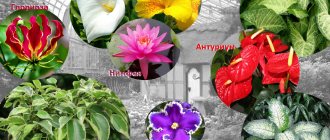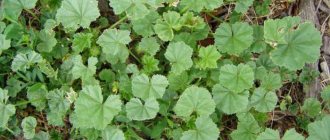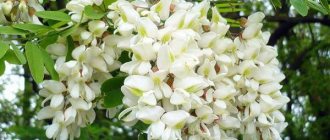General placement rules
There are certain standards that must be followed when placing plants
The main ones are a combination:
- color range
- size
- heights
- volume of flowering
With any combination there must be harmony
Compliance with this will create harmony in the composition, and the plantings will not interfere with each other’s growth and full development.
The following properties of each component element are also taken into account:
- the period of time during which flowering occurs
- how widely can a plant grow?
- availability of access to weed
Some types are well suited for highlighting lawns or for hiding outbuildings. Others begin to please the eye as soon as the snow melts. As for autumn flowers, they are set back a little, planted behind varieties whose flowering period falls earlier. The selection of an appropriate location, as well as the composition of the soil, is also important.
Chrysanthemums in an autumn flowerbed
Chrysanthemums are an excellent choice for the gardener. These flowers are rightfully considered one of the most striking symbols of autumn. The height of these autumn plants can be about one and a half meters. If such tall flowers are not suitable for the gardener, then he can opt for low-growing varieties.
A significant advantage is also the fact that chrysanthemums come in almost any color. Starting with white, yellow and lilac shades and ending with red, pink and cherry. They incredibly beautifully emphasize the central lines of the flower bed.
When planting these plants, the gardener's imagination will run wild.
Flowering period: November-December
September
Colorful landscape of September
The difference between September and other summer months is insignificant, because... the weather is not much different. Obvious changes appear in the last days of the month.
At the beginning of the autumn period there are still many flowering summer plants. But they are very sensitive to cold weather and a small amount of sunlight, and because of this, their flowering quickly ends. They are replaced by September flowers, which bloom in the autumn. Thanks to this, the colorful flower carpet in the summer cottage is preserved for a long time.
Asters
Asters
Asters bloom profusely and for a long time. For this reason they are popular. There are a large number of varieties that bloom in September and October. They are also varied in their size, flowering splendor and colors.
Caring for asters is simple. Reproduction is easy. They are not afraid of a little cold weather. Abundant flowering decorates the garden area with its diversity for a very long time. Sometimes the bush is so covered with flowering buds that the leaves are practically invisible.
There are annual and perennial varieties.
Dahlias
Dahlias
Dahlias are an excellent decoration for a summer cottage. They can grow in shaded areas with almost any soil composition. They love moisture, although an excess of it is not desirable.
The most common types are:
- anemoids
- collar
- nymphaeal
- peony-shaped
- spherical
- needle-shaped
Currently there are about 20,000 varieties.
The characteristic features are:
- form
- terryness
- length (10-12 cm)
They will look more advantageous if you place these flowers as a frame for the path, as a decorative element of parterres and composite flower beds against the background of grass.
Rudbeckia hairy
Rudbeckia hairy
Rudbeckia hairy Few people do not know the bright yellow and orange flowers with a brown center. They look like daisies, only multi-colored and large in size. It is grown as an annual flower, because... It is the flowering of the first year that is most charming, but later on its decorative appearance is quickly lost or the plant dies completely.
The trunk of the plant is straight. Its surface, like the foliage covering, is elastic and rough. The trunk length is 45-65 cm. Rudbeckia blooms for a long time (until the onset of the first frost).
Refers to unpretentious plants. Prefers good moisture and fertilized soil. Can grow in shaded areas.
Looks great in combination with coniferous plants, in rock gardens and against the backdrop of a green lawn carpet.
Majora (Zinnia gracilis)
Majora (Zinnia gracilis)
Majora (Zinnia gracilis) Perennial flower. Its trunk is smooth, reaching a height of 20-90 cm. The foliage is bright green and small in size. Its shape is heart-shaped. The inflorescence, located on an elongated peduncle, has splendor.
The shape of the flower resembles a basket with a tiled arrangement of petals with concave edges. Its diameter is about 10 cm.
For good development, the following conditions are preferable:
- nutritious soil
- well lit location
- wind protection
Chrysanthemums
Chrysanthemums
Chrysanthemums More often known under another name - oaks. They will decorate any landscape. They have a wide variety of varieties. They differ in height, size, and many colors of flowers. The shape of the inflorescences is similar to asters.
Open sun is not harmful to the plant. Prefers rich, moderately moist soil. The flowering period for chrysanthemums is late summer – all autumn.
Among all types, Korean chrysanthemums are the most popular. They are unpretentious. Small flowers literally shower the entire bush.
Also, recently you can increasingly see oak trees, which have a surprisingly regular, spherical shrub appearance and lush flowering. This beauty is called spherical chrysanthemum. Its height is no more than 0.5 m. The flowers of this species are medium-sized, double or semi-double, with a wide variety of colors.
This bush chrysanthemum is particularly undemanding to the conditions in which it develops. The flowering period is from August to November. It also propagates easily: by cuttings, dividing the bush and root system.
Also plants that bloom in early autumn include:
- gladioli
- anemone
- decorative sunflower
- balsam
- tuberous begonia
- Cannes
- geranium
- chrysanthemum
- marigold
- decorative cabbage
- Jerusalem artichoke
- fuchsia
- perennial cornflower
- phlox
- echinacea
This is just a small list of all the types with the help of which the territory will acquire a colorful and joyful look.
Phloxes
This flower came to Europe in the mid-eighteenth century, and North America is considered its homeland. Translated from Greek it is “flame”. Tall wild flowers resembled flames in color and shape, hence the name that C. Linnaeus gave them. Phlox is very often used together with other plants for the autumn flower garden. Beliefs and legends about them say that when Odysseus and his comrades emerged from the kingdom of Hades, they threw their torches to the ground. Soon they sprouted and turned into wonderful flowers - phlox. According to another legend, in ancient times there lived a girl who loved to sew. She was a skilled craftswoman. She had a lover and they were going to get married. However, the groom was taken into the army. Since then, the girl cried all the time from melancholy and sewed different outfits for people. One day she accidentally pricked her finger because her eyes were blurred with tears. From a drop of blood, a fiery flower suddenly grew, similar to her love, and red like her blood.
October
In October you really want brightness
These species not only have brightness , but they are resistant to mild frosts that occur at night.
Colchicum (colchicum)
Colchicum (colchicum)
Colchicum (Colchicum) From the genus of tuberous-bulbous and herbaceous perennial plants. It is graceful and magnificent. Flashes with the brightness of spring shades and tenderness against the fading background of the autumn period.
Low in appearance (about 20 cm), unpretentious in care . Prefers light and loose soil, location with good lighting. It takes on a spectacular appearance in a rock garden.
There are approximately 70 varieties with a variety of shapes and colors.
The flower is a poisonous species , so when working with it, safety precautions are required.
Helenium autumn
Helenium autumn
Helenium autumnalis A stunning perennial natural creation. It contains all the sunny shades, which delights the eye and causes joy. The inflorescence is small in size (about 3-4 cm), but the plant itself can reach a height of 70-150 cm.
Caring for helenium is easy. It prefers nutritious soil and a good amount of moisture. It can look good near a pond, as a hedge, or in a flower bed as a background or middle ground.
Snapdragon
Snapdragon
Snapdragons are a perennial species, but are grown as annuals. Translated from Latin, antirrhinum (Antirrhinum majus) sounds “like a muzzle”, and the flowers look very unusual, reminiscent of the mouth of a lion (hence the name).
Snapdragon is popular for its variety of color shades. This is a possible brightness of white color, turning into a dark burgundy color.
The height of the plant depends on the variety. It can be tall (up to 80 cm), low and dwarf (up to 20 cm). The inflorescence is cone-shaped, reaching a length of 35 cm. The stem is straight and strong. Flowering is long lasting and does not stop even with the onset of frost.
It is better to locate in areas with space and good lighting. The soil composition is light loamy. Care is not difficult. If you regularly remove faded flowers, shoots begin to develop on the sides, which are subsequently covered with abundant bright blooms.
Pansies (Vitrocca violet, viola)
Pansies
Pansy (Vitrocca violet, viola) Low growing and perennial species. It is cold resistant. Externally it resembles violet flowers. Has a wide variety of colors.
The plant is not picky about its location, but when located in a shaded corner it does not bloom profusely. Excess humidity is not desirable. It is better to choose loamy soil.
Viola looks great in many places , for example, as a decoration for balconies, borders located along paths, in flowerpots in garden plots.
Nasturtium
Nasturtium
Nasturtium The most popular autumn plant. When planted in heavily fertilized soil, only foliage begins to grow, and flowering ceases to be abundant. If the soil is not nutritious in sufficient quantities, the flower will lose its decorative effect.
Most types of nasturtium are annual. The following common types are distinguished:
- Bush - has small dimensions (height about 30 cm). Annual bush. Used in landscape design, planted along borders, in flowerpots
- Curly - used as a living fence, to decorate balconies and walls. Annual species
- Hanging - used as an external vertical decorating element of houses or other areas of the territory. annual plant
- Terry - annual type. Used in landscape design
- Climbing - perennial type, decorates terraces, gazebos, flower beds
The height of all types of nasturtium can vary from 25-30 cm to 2-3 m. It is advisable to place it where there is good lighting.
Today there are about 90 varieties of the plant. For cold regions, perennial species are chosen because they are resistant to low temperatures (up to -200C).
Coreopsis
Coreopsis
Coreopsis The plant is tall and dwarf (from 15 cm to 90 cm), depending on the variety. Its thin, erect stems are pubescent, forming a sparse bush. It can reach a width of up to 60-70 cm. The foliage color is bright green, the shape is lanceolate, oblong.
The inflorescences are large (diameter 6-8 cm) in the form of a basket, with jagged edges and are located at the top of the trunk. Their color can be bright yellow, red, pink.
It usually blooms from the end of June to the end of summer, but with systematic cutting of the inflorescences at the end of flowering, coreopsis will bloom again in the autumn.
It is easy to care for and grow. It has an interesting combination with summer flower arrangements.
Cohosh
Cohosh
Cohosh It may be known by another name - black cohosh. It is a perennial plant with grace and elegance.
Black cohosh is tall (up to 2 m) with a branching stem. Foliage – dissected, openwork. The inflorescences are small, white, forming a paniculate tassel.
The flowering period falls in September and October.
Also plants that bloom in October include:
- hydrangea paniculata
- sweet pea
- marigold
- pelargonium
- verbena
- lantana
- crocus
- daisies
- rose
- lobelia
- ageratum
- gatsaniya
- spotted sapling
- heliopsis
- kobeya
- salvia
The above and many other plants with October flowering, like a particle of summer warmth, will be able to warm you with their aromas and the splendor of flowering.
Aliens from the South
Annuals bloom right up to the snow: nasturtiums, petunias, marigolds, morning glory, snapdragons, pansies, alyssums. All of them are newcomers from the south, and in their homeland - in the tropics and subtropics - they vegetate much longer, grow and bloom for years, without any dormant period.
The southern plant, introduced to northern latitudes, does not shed its leaves until winter, which remain green under the snow. This applies to lilacs, black locusts, and many southern poplars.
Question and answer What to do if the rhododendron blooms in the fall?
Of course, with the onset of winter cold, flower beds with “summer gardens” do not look so decorative: many shoots and leaves dry out and turn black, there are more boxes with ripe seeds than the flowers and buds themselves. The last bright strokes on the autumn palette of the garden always especially warm the soul!
Caring for annuals is minimal; once a week, work with scissors and pruners, removing dry parts and weeding. This way you will maintain their decorative properties until the coldest weather.
November
November brightness
Autumn ends, the trees shed their last leaves, and the area becomes empty. There is an atmosphere of sadness, grayness and gloom around. At the moment, when a long cold period is approaching, the look is especially lacking in bright colors. There are a lot of flowers left in November. They have not yet bloomed from previous months.
November flowers will delight you with their attractive appearance until the frosts.
Marigold
Marigold
Marigolds There are annual and perennial species. There are more than 50 different species. They are all different in their beauty and color palette (from rich yellow to brick red). They are small bushes with a height of 0.2 m to 1.2 m. During the period when marigolds bloom, an unsurpassed aroma is in the air.
The following types are divided:
- terry
- semi-double
- Dianthus
- simple
- chrysanthemum-shaped
Petunia
Petunia
Petunia Another messenger of the past warm season. About 20 species are distinguished. These are both annual and perennial species.
It is absolutely unpretentious to the conditions, location and soil composition in which it will grow. Because of these qualities and the richness of its colors, petunia is found in almost all garden areas.
The flower stalk is small (up to 10 cm). It can be straight and standing, as well as creeping along the flowerbed.
Petunia is an incredibly beautiful decoration for any corner of the territory, especially at the end of the autumn season.
Rhododendron
Rhododendron
Rhododendron Evergreen decorating element of the landscape. The plant blooms in June, but its leaves retain their amazing emerald color until the end of November.
Rhododendron katevbinskiy grandiflorum is the most frost-resistant variety. Height - up to 4 m. It is distinguished by dense foliage.
The flower grows very quickly (8-12 cm/year), and lives up to 100 years. Easy to care for. It develops well with the following soil composition:
- slightly acidic
- sour
- peat
- loamy
Phloxes
Phloxes
Phlox This flower delights with its splendor at the moment it blooms. The color range has a wide variety.
Phlox paniculata is the latest species. It is a tall shrub with lush flowering. Its color varies from pink or bright red to purple.
Rose
Rose
Rose is a beauty queen. It blooms for a very long time and withstands the first mild frosts. Today there are a large number of different varieties. They survive the winter period safely and continue to bloom even in cold weather conditions.
The most frost-resistant species include park, American and Canadian varieties. Has a wide variety of color shades. This can satisfy even the most demanding needs of every gardener.
Ageratum
Ageratum
Ageratum The birthplace of ageratum is India and America (some of its regions). Translated from Latin, Ageratum means ageless, because the bush remains with green foliage for a long time.
Belongs to perennial shrubs. Height no more than 0.5 m. Widely used in landscape design. Ageratum has endurance.
The density of the flowering crown is determined by the arrangement of flower stalks in several paths, so the flowering is lush, beautiful, and spherical. The color of the flowers is striking in the variety of shades.
goldenrod
goldenrod
Goldenrod A fast growing herbaceous plant. Like weeds, it can, if possible, fill any area in a personal plot.
Some varieties have almost no foliage or it looks like small hairs. Their color has a delicate bright golden color. The structure of the inflorescence can be like umbrellas, panicles or spike-shaped.
Goldenrod can bloom until late autumn. Looks great in compositions of alpine slides, rockeries and other modern elements in landscape design. Also, bouquets are decorated with inflorescences when cut.
sedum
sedum
Sedum Blooming until the end of the autumn period, sedum is able to decorate the garden with the brightness of its flowers. It has an unpretentious character. It's easy to care for.
The size of the inflorescences united by buds reaches 25 cm. The range of their color shades is unimaginable:
- white
- purple
- lilac
- pink
- violet
The height of the flower depends on the variety. It can be 35 cm and reach up to 80 cm.
The variety also affects the period when sedum begins to bloom. The plant is frost-resistant. Widely used in landscape design. It goes well with red plants and white, blue and silver foliage.
There are quite a lot of names of flowers that continue to bloom in the last month of autumn.
These could also be:
- echinacea
- aster
- chrysanthemum
- Waller's balsam
- fuchsia
- gatsaniya
- nemesia
- Dimorphotheca emarginata
- Phlox Drumond
- pansies
- and many others that will turn the territory into a real summer corner amid the onset of cold weather on the eve of winter
November flowers
Bright border of autumn flowers
November - a month with an empty garden, trees without leaves, nature preparing for winter sleep - evokes despondency. At this time, we experience special joy from contemplating a colorful corner with flowering plants. A real explosion of positive emotions!
Marigold
Marigolds have been a favorite among flowers in almost any flower bed for decades.
Marigolds (Tagethys) are annual or perennial bush plants. Tagetis are shade-tolerant flowers, but they still feel more comfortable in sunny areas. Plants require nutritious and moist soil characteristics.
Marigolds are very beautiful, unpretentious and pleasing to the eye for a long time
Possessing an incomparable scent, marigolds create a picturesque floral carpet, the shades of which can vary from bright yellow to reddish brown. Tagetis blooms until frost. Before the onset of frost, the bush can be carefully dug up and transplanted into a pot. In this case, the unpretentious flower will delight you with its flowering for a long time, but already indoors.
Petunia
Petunias are the real messengers of summer. Ideal for any garden. In addition to the bright, colorful flowers that delight the eye throughout the fall, this plant can adapt to almost any climatic conditions and is unpretentious to the planting site.
Gorgeous bright petunia
For your garden, you can choose petunias with both erect and creeping stems. Usually the height does not exceed 10 cm.
The plant tolerates cold well. It will harmoniously fit into the design of any summer cottage - both in flower beds and borders, and in concrete flowerpots.
Petunias amaze with their variety of colors
Phloxes
Phlox are bush plants with bright, juicy flowers of a wide variety of colors. A lushly blooming, unusually beautiful plant attracts many gardeners primarily for its unpretentiousness, frost resistance and wonderful aroma.
It's hard to imagine an autumn flowerbed without phlox
Phloxes are suitable for any site, since there are both shade-tolerant and light-loving species. By combining different types of this plant, you can ensure that phlox will be in bloom from spring until late autumn.
Rose
Cream roses
This amazing plant has been given the status of queen among flowers. There are varieties that are characterized by winter hardiness. They will be able to delight their owners with beauty and grandeur even after slight frosts. Currently, many new species have been bred that can survive in the harshest climates and continue to bloom even after the cold has begun.
climbing roses
The choice of color and appearance is so diverse that even the most sophisticated gardeners will be able to find something to suit their taste. And a photo of late flowering plants, installed on your home computer desktop, will remind you of your garden, giving even more comfort and warmth to your home.
Colors for all seasons
Flowering for more than one season
The most popular among gardeners are plants whose flowering occurs not only during a certain period (summer, autumn), but those that can bloom from the beginning of summer until the coldest weather. If the seeds were sown in a timely manner and the seedlings were grown, flowering can begin in the spring.
Verbena
Verbena
Verbena There are annual varieties and those that can live for a very long time and delight with themselves. Colors may vary:
- dark blue
- burgundy
- red
All inflorescences in the central part are white.
Verbena is thermophilic and prefers loose soil. It can be grown not only in open spaces, but also develops with good results on home windowsills in pots.
Gatsania
Gatsania
Gatsania Low-growing species (25 cm). Loves good lighting. It is a perennial, but is grown for one season. The foliage shape is linear. Flowers in the form of baskets. Their size is average (7 cm). The shape of the petals is reed. Various colors.
Osteospermum
Osteospermum
Osteospermum Tolerant to hot and cold conditions. Pleases with abundant flowering even in autumn. The stem of the plant is strong and reaches a height of 55 cm. The inflorescence is large (4.5 cm) in the form of a chamomile. Its color is white with a blue center. There are other varieties that have different colors:
- lilac
- yellow
- orange
Grows well in fertile soil.
Heather
Heather
Heather is a branching and creeping small bush. Height – 0.3-0.7 m. Belongs to the evergreen species. The foliage is triangular and seems to curl into a tube. The inflorescences are small. Their shape is similar to bells. When they bloom, a strong smell spreads.
Heather blooms in the second half of the summer season. It looks more wonderful with the onset of frost, because the foliage changes color. It turns burgundy or yellow.
This species is used for food purposes. And heather honey is considered one of the most beneficial.
In landscape decoration it is used to create alpine slides, borders along garden paths, and ridges. It takes on a spectacular appearance against the backdrop of small coniferous plants.
Erika
Erika
Erica An evergreen plant belonging to the type of subshrub. Its branches are very tender and brittle. The inflorescences are small, racemose, with flowers resembling bells in appearance. Their colors are: white, purple, lilac.
It is unpretentious, so it is often planted in garden plots.
The coloring of the buds begins in mid-autumn and this brightness fades into winter. If there is little snow, the beauty of Erica will continue to bring joy until it is covered with snow. Flowering seems to last a long time, because... faded inflorescences do not fall off for a very long time, but hang on the bush. Even when closed, the buds do not lose their richness and charm. With the arrival of spring, the bush is one of the first to paint the landscape with bright colors.
Celosia
Celosia
Celosia The most common varieties for the Russian climate are celosia spicata and celosia comb. The plant is sun-loving and prefers to grow in fertile, loose soil.
Celosia blooms from the middle of the summer season until October (stops blooming with the onset of cold weather).
It is often used to decorate borders on garden paths or planted in pots to decorate balconies and terraces.
Amaranth
Amaranth
Amaranth Another name for amaranth. Perfectly decorates any garden plot. It is distinguished by its attractiveness, unpretentiousness, and rapid growth. It is a medicinal plant.
The natural environment of the flower is America, China, India.
The inflorescences have an unusual axillary shape and are collected in spike-shaped panicles. Their shades are varied: golden, red, purple, green.
The flowering period begins in June and ends with the onset of cold weather.
Crocosmia
Crocosmia
Crocosmia An equally beautiful plant is also called Montbrecia. Inflorescence color: orange, yellow, red. Ideally combined in compositions with lilac or dark purple asters.
Loves the sun very much. The soil is fertilized before planting. A mixture of lime and bone meal is also added to it. In case of heavy, poorly drained soil, a small amount of snow, or severe frosts, the tubers must be dug up for the winter period.
Flowering is long and abundant. It falls in mid-summer and until early autumn, and maybe even before cold weather. It depends on the weather and climate. Cut flowers remain fresh for up to 2 weeks. A wonderful decoration for an open flower bed or bouquet.
Rudbeckias in an autumn flowerbed
Rudbeckias are a true miracle of nature. Not only are they able to bloom in the shade until frost, but they also do not require special care. As an illustration, this photo fits perfectly.
In appearance they are very reminiscent of ordinary chamomile. The only difference is that, firstly, the petals of rudbeckia are not white, but bright orange or yellow and become dark brown towards the base. Secondly, the core of the flower may look like a stunningly beautiful purple bead with a metallic tint.
The stems of these flowers reach about sixty-five centimeters in length. Look at the photo again to make sure that the beauty of the autumn flower garden is not inferior to the summer one.
Blooms: from July until the first frost
Field paints
Field paints
Despite their modesty, wildflowers are no less loved by gardeners. They give flower beds a natural look.
Field crops on the territory provide their own advantages:
- the flowerbed looks more attractive and vital, because... bees and butterflies begin to visit her
- Thanks to naturalness, a cozy and unique atmosphere is created
- in most cases, such plants are medicinal, which can be very useful
Sage
Sage
Sage Medicinal plant. Even in combination with other colors it does not lose its individuality and attractiveness. Grows well under any conditions and soil composition.
Liatris
Liatris
Liatris Flower of tenderness and romance. It also has properties that have many benefits. It is very colorful in appearance. It is not difficult to care for. Has a pleasant aroma. Creates an ideal combination in a group with other flowers and in border plantings.
Yarrow
Yarrow
Yarrow Has many wonderful qualities:
- beautifully decorates the flower garden
- looks beautiful in a bouquet on the table
- due to its medicinal properties it should be in every first aid kit
Gardeners also love this plant because it is easy to care for and blooms profusely and for a long time.
Wildflowers in a garden plot in autumn
Heather continues its summer flowering in autumn. This plant is mentioned in the ballad "Heather Honey", about the last secret of the Picts, by Robert Louis Stevenson. This is truly a beautiful wildflower of Scotland and you can admire it in bloom even in autumn.
Fragrant heather
The blossoming of fragrant violets is an unforgettable sight
Anemone anemone also pleases with repeated flowering
Plant wildflowers, decorate your wonderful garden with plants that will bloom at different times, and you will always be in high spirits, which flowers will give you in gratitude for your care and concern.
And if you have questions for the author of the article or want to share your experience of caring for autumn flowers, leave your opinion in the form below.
X
Preparing for winter
The coming of winter in color
If perennial crops are planted to decorate the area with flowers, they must be prepared for winter.
First of all, plants that are not dug up for the winter are pruned. This is done so that with the onset of spring, nothing interferes with the growth of young shoots. When cutting dried stems, a small part of them with leaves is left. These shoots will accumulate nutrients that the plant will need for development next year. After the pruning procedure, the soil around the plant needs loosening and fertilizing (humus, compost).
Also, preparation for the winter period consists of the following actions:
- Planting bulbous species (daffodils, tulips, crocuses). It is better to do this at the end of summer - beginning of autumn. If the action took place at a later date, the planting is covered with leaves, straw or dry twigs
- Before cold weather sets in, perennial plants (irises, phlox, primroses) divide
- Seeds are collected from annual species (asters, marigolds). They will be used next year
- When the temperature drops from 0...+50C, clematis take cover. The easiest way to do this is to wrap their own shoots
- The green part of the peonies is cut off, the ground around is loosened and sprinkled with ash.
- Before frost sets in, roses are covered with peat or sand. They take shelter after frost sets in
- In late autumn, summer plants are sown. Their seeds should have time to swell, but germination should not occur. They will germinate with the arrival of spring after the snow melts
Autumn flowers in the garden
Having carried out all of the above work before the first snow falls, the flower garden will be fully prepared for winter.
The names of flowers described in the article are only a small part, the flowering of which begins in the fall or does not end when cold weather has already arrived. In fact, there are a large number of species that are unpretentious and frost-resistant. But don’t rush and plant all the flowers you have just because they will bloom for a very long time.
There will be enough of several species that can decorate the area at the dacha. They should not only be pleasing to the eye, but, preferably, they should be easy to care for. Autumn time is when all the work is completed, and a well-arranged flower garden will allow you to enjoy the efforts spent and happily relax.
Don't forget also:
- To plant lilies, you can read how best to do this here. September is also the best time for propagating lilies, because they will have enough time to take root before the onset of persistent frosts. You can choose a more convenient way to propagate lilies by reading this article.
- At the beginning of the month, hill up the dahlias so that the buds at the root collar do not die during frosts.
- At the first signs of frost damage to the above-ground parts of cannas, begonias, and callas, carefully dig them out with a clod of earth; dry without shaking off the soil, and place them for storage in a basement or other frost-free room with a temperature of 4-5 ° C.
- Feed rhododendrons with mineral fertilizer that does not contain nitrogen.
- Cut off most of the flowering shoots of Korean chrysanthemums so that they form a winter root system.
- Loosen the soil around the clematis, remove weeds, and in dry weather, water the bushes, but do not feed them.
- If necessary, divide fairly large clematis bushes. To do this, we dig them up, divide them and plant them in prepared holes, deepening the tillering node by 5-7 cm. To avoid damage by fungal diseases, we spray the soil around the plants with some fungicide or dust them with copper oxychloride.
- Dig up the soil around bushes of ornamental crops to destroy wintering pests.
- Collect seeds of flowers you like so that you can admire them next season. Dry them, be sure to clean them, then put them in paper bags, sign the names, year of collection and store in a cool place until sowing.
- At the end of the month, cut the peony stems almost to the ground and spray them with a solution of Bordeaux mixture. Remove weeds around and inside the bush, scatter superphosphate and potassium sulfate, or better yet, ash and loosen the soil.
- Cut off the leaves of the irises, leaving 5-6 cm in height and also spray them with a 1% solution of Bordeaux mixture.
- Select the largest and healthiest bulbs of daffodils, tulips and hyacinths for winter forcing; plant them in pots and place them in a cold basement until November-December.
- At the end of the month, dig up the faded dahlias, clean the tubers from the soil, divide them, soak them for 30 minutes in a pink solution of potassium permanganate, then dry them in the sun and store them.
That’s probably all the main September activities in the flower garden. Now we know what work awaits us in the garden, what flowers await us in September
and all that remains is to decide on the gardening chores.
See you soon, dear friends!
Flowerbed design
An autumn flower bed can become a real decoration for your garden and yard if you think through everything to the smallest detail. There are a large number of plants that can be used to decorate home flower beds. First of all, you need to determine what types of crops will be contained in them:
- you need to choose perennial plants or sow directly into the ground;
- flowers should be unpretentious, resistant to rain and wind.
Ground cover shrubs are very common among gardeners. Sedum is ideal for an autumn flower garden. It reproduces easily, withstands precipitation, and its appearance will not be too flashy. Bush types of sedums look great on the lawn, single flower beds, in mixborders and various compositions. For example, the combination of sedum with grain crops is unusual. A separate bush of this modest plant will come in handy when you need to decorate a border along a path, disguise soil unevenness or voids formed in the garden.
When composing an original autumn composition or decorating a background in a flower bed, pennisetum is a suitable choice - a cereal plant with long purple leaves-spikelets. Miscanthus with corolla flowers is very good for single planting. It takes up quite a lot of space, so it is necessary to constantly ensure that the roots do not grow, otherwise a beautiful garden plant will fill the entire space of the garden plot and spread to neighboring ones.
Advice!
Properly selected plants will allow you to admire flowers from spring until the first frost. The main design technique is the choice of shape, color and size.
Low-growing and groundcover plants such as sedum, cloves, thyme, phlox, as well as perennial peonies, asters, lilies, and delphiniums are very good. In garden design they can be used for landscape volume. All plantings must be in harmony with the trees and shrubs growing in the dacha; abrupt transitions from one species to another should not be allowed. In shady and damp areas you can plant hoofweed, anemone, bergenia and fern.
Amaranths
Three types of amaranths (Amaranthus) are grown :
- A. paniculata (A. cruentus) - no one knows where it comes from, but it already has very interesting varieties;
- A. tailed (A. caudatus) - it is easy to distinguish by its intermittent drooping inflorescences, it comes from the Middle East and tropical Africa;
- A. tricolor (A. tricolor) - from the Indo-Malayan region, its decorative foliage cultivars are very impressive.
Amaranth paniculata What do amaranths like:
- moist fertile soil;
- feeding;
- regular watering in hot, dry summers;
- good lighting - in the light they are more decorative.
What amaranths don’t like:
- heavy soils;
- naked slugs.
What is the best way to place amaranths in the country: Look how spectacular amaranth caudate is in a single-row planting near the house!
He dominates, and all the other flowers only complement his purple “royal” mantle. Amaranth tailed, photo SvetLanaSemen
And here are our southern exotics: paniculata amaranth and Basio banana - purple inflorescences and bright green leaves.
Paniculata amaranth and Basio banana
2 interesting facts from the life of amaranths:
- “unfading” - this is how “amaranth” is translated from Latin, and this corresponds to reality: it seems that its inflorescences seem to be lifeless, dry, immortal;
- From the red-leaved amaranth variety 'Valentina', colleagues from VNIISSOK (Moscow) developed a domestic tea "Amarantil" with a general strengthening effect.
In our catalog, which combines offers from various online stores of seeds and planting material, amaranths are presented in a wide range - you can find suitable crops for your site here.
Select amaranth seeds. Amaranth Oli Splende 52 RUR
Russian Vegetable Garden
Amaranth Bronze arrows 21 RUR
Russian Vegetable Garden
Amaranth Red Cathedral 13 RUR
Russian Vegetable Garden
Amaranth Red Meat 26 RUR
Russian Vegetable Garden
Tagetes
Or, in common parlance, marigolds.
Unlike most autumn plants, they bloom not in September, but in October and November. They have yellow and orange leaves, and the inflorescences are so large that during flowering, it seems as if the flowerbed has turned into a sunny carpet.
This bright riot of colors, blooming marigolds, in itself warms you up when it gets less warm outside every day.
You can read more about sowing marigolds for seedlings here.
Flower garden with tagetes: from June until the first frost











